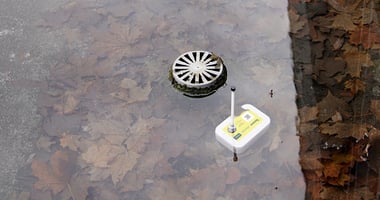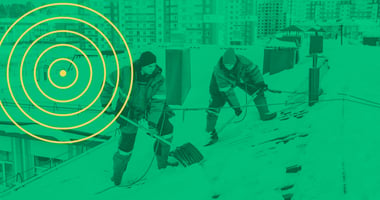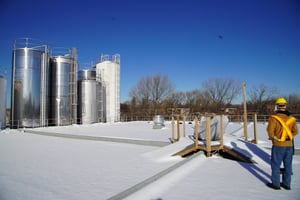The Internet of Things (IoT): Connected Technology for Maintenance

At Tensio, we understand that technology, and specifically IoT (Internet of Things), can transform the way we manage buildings, especially in winter! To learn more about this subject, we spoke with Nicolas Juteau, Electronic and Firmware Developer at Tensio, who explains what Internet of Things (IoT) is and how it integrates into our preventive maintenance solution. With IoT, we can monitor real-time snow accumulation and roof drain obstructions, providing building managers with peace of mind and targeted interventions, while preventing risks and costs that could have been avoided.
Tensio: Nicolas, could you describe IoT in simple terms?
Nicolas: Yes, there are two ways to look at IoT. The first is quite tangible: I would say that IoT is simply having more and more everyday objects—like a thermostat, camera, or watch—connected to the Internet. In more theoretical terms, IoT can be defined as the interconnection of simple objects with each other, with or without an Internet connection, enabling access to data or control of environments in completely new ways.
A typical example would be the smartphone. Initially, a phone was only used for making calls, but with advances in technology, it took on a whole new dimension: enabling text communication, Internet access, and the use of a range of sensors. Today, we might debate whether the cellphone is still an IoT device, but at the time, it was a technological revolution. Now, IoT incorporates everyday objects we would never have imagined connected to the Internet.
There are many IoT devices that don’t necessarily use the Internet. Sometimes they use other communication protocols, like Bluetooth, Sigfox, Zigbee, NB-IoT or LoRaWAN, which we use at Tensio. These protocols allow two devices to communicate and interact with each other without an Internet connection. But of course, most of the time, an Internet connection is used.
Tensio: For those unfamiliar with LoRaWAN, does it work with waves between two devices?
Nicolas: Yes, exactly! With LoRaWAN, there is a receiver and a transmitter, and often devices have both functions, as one-way communication would be impractical. This allows data to be sent in the form of electromagnetic waves. Each protocol has its pros and cons, and the choice depends on the context and needs.
In our case, LoRaWAN is ideal for environments with obstacles like thick walls, as it penetrates them well. However, LoRaWAN isn’t designed to transmit large amounts of data—you wouldn’t stream YouTube with it! Its use is perfect for sending simple information like voltage, temperature, or humidity levels.
Tensio: So for us at Tensio, using LoRaWAN is ideal, as the low data rate isn’t really a drawback, right?
Nicolas: Exactly. In engineering, there are always trade-offs, but some drawbacks are less limiting than others. In our case, the low data rate of LoRaWAN poses no problem, as we don’t need to transmit large amounts of data. It’s a solution perfectly suited to our needs.
Tensio: To show that IoT can be fun and simple, what’s the connected gadget you use most in your daily life?
Nicolas: It might sound strange, but I don’t use many connected devices, aside from my phone—even though some might argue it’s not an IoT device! One device I used a lot in the past, especially when my kids were little, is a monitoring camera for their room. It’s a small camera available on the internet that connects to Wi-Fi and lets you monitor a baby from a smartphone.
The camera can detect sound and send notifications if there’s movements or noises in the room. It’s really the connected device I have used the most. But other than that, I don’t have a smart thermostat, fridge, or watch.
Tensio: What’s the benefit for Tensio’s clients to be connected to IoT?
 Nicolas: For Tensio’s clients, before, they had to send someone on the roof to visually estimate the snow height. Sometimes, the person in charge wasn’t available, or there was a lack of staff to perform this task, and on top of that, this empirical check was approximate – based on markers like “it’s up to the knee.”
Nicolas: For Tensio’s clients, before, they had to send someone on the roof to visually estimate the snow height. Sometimes, the person in charge wasn’t available, or there was a lack of staff to perform this task, and on top of that, this empirical check was approximate – based on markers like “it’s up to the knee.”
With Tensio, there’s no need to climb on the roof to estimate snow load. Sensors measure the snow quantity objectively, without guesswork, and the data is transmitted via LoRaWAN to our servers. It is then displayed on the client dashboard, where alerts can be sent if actions are needed. Our IoT solution greatly enhances customers’ experience, eliminates the downsides of visual methods, and provides peace of mind.
To learn more about our connected maintenance solutions, contact us!
%20(2).png?width=150&height=50&name=Tensio_Logo-SansPositionnement_RVB%20(1)%20(2).png)


